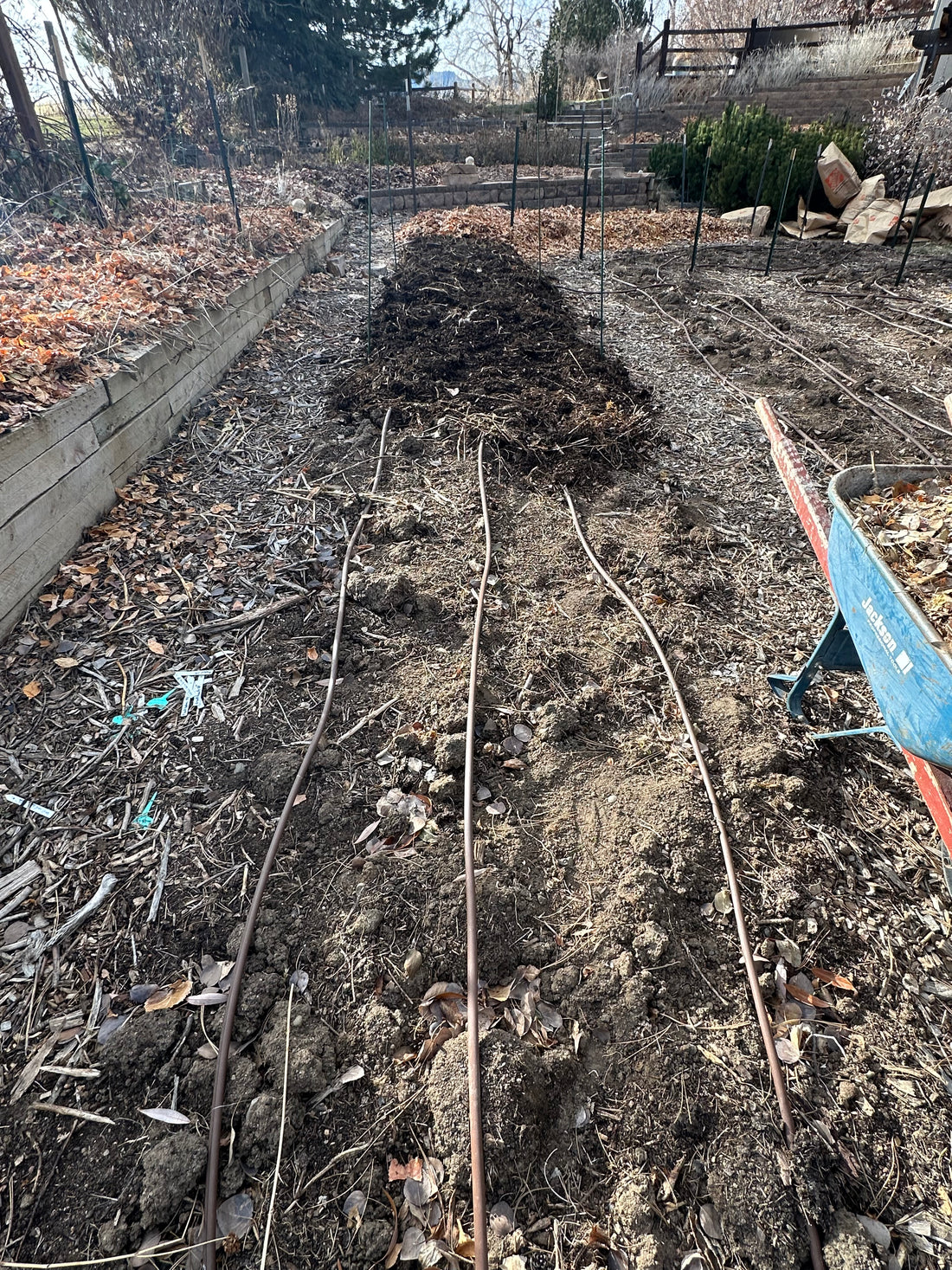
Protect Your Garden & Prepare for Spring with Winter Strategies!
Share
Soil Preparation for a Thriving Dahlia Garden: Setting the Stage for Next Year’s Blooms
Dahlias are a gardener’s dream: vibrant, diverse, and dazzling, they reward us generously with their blooms. But behind every successful dahlia garden lies well-prepared soil. Thoughtful soil preparation during the off-season not only ensures a thriving dahlia garden but also improves soil health year after year. Let’s explore four common strategies for preparing your soil: leaving it bare, adding compost, applying leaf mulch, or growing a cover crop. Each approach offers unique benefits, so you can choose what works best for your garden.
1. Leaving Bare Soil
After a year of hard work by your dahlia’s producing hundreds of blooms do you think your soil is depleted of energy or do you think it has an abundance of nutrients and energy?

If simplicity is your goal, you can leave your garden soil bare over the winter. While this method requires little effort, it does come with some trade-offs. Without a protective covering, soil is exposed to wind and rain, which can lead to erosion and nutrient loss. On the plus side, bare soil warms up faster in the spring, allowing you to plant your dahlia tubers earlier. To minimize erosion, consider lightly tilling the soil before the growing season to restore its structure.
Best for: Areas with mild winters and minimal rainfall, or gardeners short on time.
2. Covering with Compost

Adding a 2-inch layer of compost to your soil is an excellent way to enrich it with organic matter and replenish the resources and energy the soil has given to you during the past year growing 4 ft tall dahlia plants and hundreds of blooms! As the compost breaks down over winter, it replenishes nutrients and enhances soil structure, promoting better water retention and drainage—key factors for dahlias, which dislike soggy roots. In spring, simply mix the compost into the top layer of soil before planting.
Why it works: Compost introduces beneficial microbes and nutrients, and it replenishes all that we “took” from the soil over the last year growing beautiful flowers and which create a healthy foundation for next year’s dahlia tubers.
Best for: Gardeners looking to improve soil fertility and reduce soil compaction.
3. Applying Leaf Mulch

Autumn leaves are a natural gift for gardeners. Spread a layer of leaf mulch over your garden bed to protect the soil from erosion and temperature fluctuations. Over time, the leaves decompose, enriching the soil with organic matter and nutrients. This approach also fosters beneficial microbial activity, creating a healthy ecosystem beneath the surface.
Pro tip: Shred the leaves before applying them to ensure they decompose faster and don’t mat down, which can block water and air.
Best for: Areas with abundant leaves in the fall and gardeners who want to recycle natural resources.
It is always one of the most surprising gifts to us due to its many benefits. Nature’s gift every single year, organic matter from leaves is returned to the earth. And its benefits to keep the soil cool(wonderful for dahlias), mulch to prevent weeds, and organic matter for earth worms for food as they create drainage and aeration in our heavy clay soil and they develop an ecosystem where they replenish the ecosystem and the fertility of the soil!
4. Planting a Cover Crop


For gardeners willing to plan ahead, cover crops are a powerful tool for improving soil health. Crops like clover, winter rye, or vetch can be sown after dahlias are harvested. These plants help prevent erosion, suppress weeds, and fix nitrogen in the soil, enhancing its fertility. In spring, the cover crop can be tilled into the soil as green manure, adding organic matter and nutrients for the upcoming season. Our frost came 3 weeks later than usual this fall. So, we kept growing our dahlias instead of growing cover crops as per our standard soil improvement process. We are adding compost and leaf mulch in place of cover crops for most of our garden beds this year.
Why it works: Cover crops not only build soil fertility but also improve its texture, making it easier to work with when planting dahlias.
Best for: Gardeners aiming for long-term soil health and sustainability.
Choosing the Right Approach for Your Garden
Each method has its merits, and your choice depends on your time, resources, and gardening goals. For gardeners seeking low-maintenance options, compost or leaf mulch might be the way to go. If you’re focused on long-term soil improvement, cover crops can work wonders. And while bare soil may not add organic matter, it’s a viable option in specific conditions.
By preparing your soil thoughtfully now, you’re setting the stage for a vibrant, healthy dahlia garden next year. No matter which method you choose, your dahlias will thank you with their radiant blooms.
